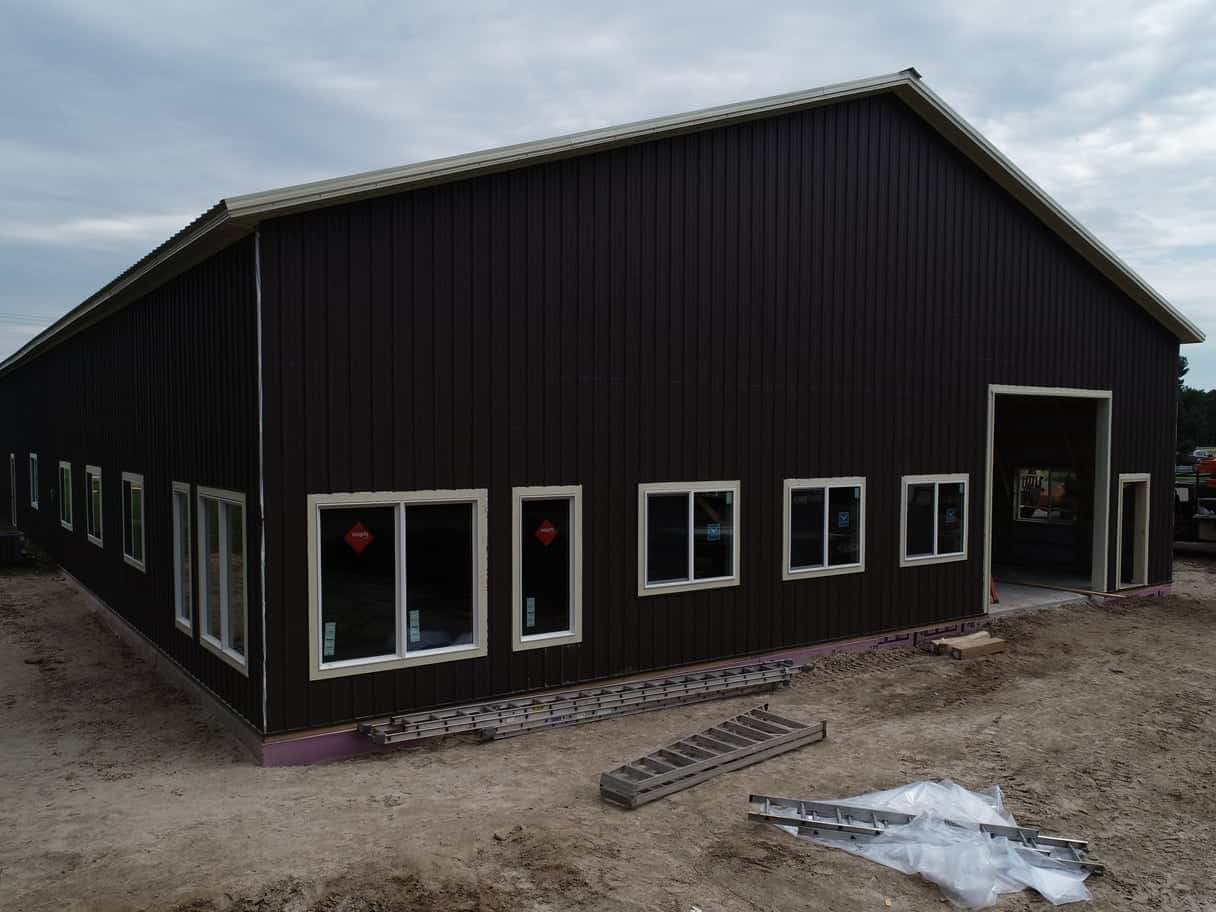CUSTOM POLE BARNS
When you’re thinking of constructing a storage building to add to your current home or you would like to develop an inexpensive building for your business, you should better understand what pole barns are. Consider the kinds of costs associated with them and how long these buildings last. Pole buildings are considered to be highly adaptable, which means that they can be used to create residential buildings, commercial buildings, and storage and accessory buildings. Because of the various framing methodologies available to you, knowing about the advantages and disadvantages of pole buildings should help you make an informed decision on which type of building you want to construct.
What Are Pole Buildings?
When you’re looking to develop a building at a reasonable cost, you might want to think about constructing a pole building. Commonly referred to as pole barns, these buildings use a construction methodology known as post-frame construction. This form of construction allows small or large buildings to be created that come with wide-open spaces, can have very high ceilings, and have no basements. These buildings primarily use laminated wood posts to create the standard framing element that will transfer snow and wind loads to the foundation of the building.
Pole Barn Framing
The posts are connected via sidewall girts made from wood. The roof is comprised of wood trusses that are connected via wood purlins. Various types of exterior cladding can then be placed around the posts in order to hold everything together. While this cladding can consist of many different materials, the main material used for pole buildings involves steel panels. The wooden posts that are used for the creation of a pole building are typically buried into the ground at a depth of around 4-6 feet, which helps to provide the construction with structural support. These wood posts serve as the primary vertical framing components for the building in question.

When you compare this construction methodology to a stick-frame structure, the frames that are used for stick-frame structures are typically built over a basement or crawlspace, which means that the foundation will need to be comprised of concrete support. As such, the costs for a stick-frame structure are usually much higher than the post-frame alternative. While pole buildings are relatively simple to construct and are considered to be very safe, maintenance is required in order for the building to last for many years. For instance, the siding and roofing materials that are used as the exterior glue for the post-frame construction may need to be replaced, repainted, or resurfaced years down the road.

How Long Do Pole Buildings Last?
Pole barns that are made using post-frame construction can last upwards of 40-60 years if properly maintained. Most homes that are designed with the stick-frame method can last around 60-80 years. Keep in mind that maintenance is highly important for any building that’s made with the post-frame technique.

Pros and Cons of Developing Pole Buildings
There are many benefits of developing pole buildings when compared to other construction methods like stick-built construction or steel-frame construction. Likely the most notable benefit of using this construction method is that it’s the least expensive option available to you. This is also a very adaptable and usable construction method, which allows you to create a wide variety of buildings like warehouses, auto workshops, homes, and tool sheds. Many different types of cladding can be used on the exterior to make the building appear however you want it to.

Among the best aspects of using post-frame construction is that pole barns take very little time to construct when compared to other building methods. When you’re using post-frame construction for a garage, it’s possible for construction to be completed in less than a week. Even for large commercial spaces, the building can be put up in around a week. Spaces of 2,000-4,000 square feet can oftentimes be constructed in as little as a couple of days.
The main downside with this type of building is that it doesn’t have a basement which can lessen storage capabilities. Stick-built conventional buildings come with a concrete foundation. Pole buildings, on the other hand, have wood-pole foundations that offer flexibility as to the foundation design.







